Published on October 13, 2014 at 13:40
My left hand and I posted a lot of travel pictures. Many people are very interested in how these pictures were taken. Some people have been consulting us all the time. Let me just talk about the skills of taking these pictures. If you have anything to know, you can leave a message at the back. All the words and pictures are original works of inikon. Please indicate the source for individual reprint. We reserve the right to investigate all violations. Thank you for your cooperation!
We are always excited about such a travel strategy: if you don't enjoy the sunset of kentample, you are in vain; Or, here is the most beautiful sunrise in the world, we wait in a silence for the sun to slowly open the dark blue sky. In the face of such a magnificent scenery, how can we take pictures that are either peaceful, gorgeous or romantic? Follow me to do the following, I believe you will gain. Picture parameters: Sony a900, 16-35mmf2.8za, F16, 1 / 60s, iso200, shadow white balance Angkor, Cambodia, uses the modeling effect of low angle light after sunrise to enhance the three-dimensional sense of the picture, and the frame type composition technique guides the line of sight to the main tower of Angkor in the distance. Don't be cheated by the strong sunlight when measuring light. You need to avoid the sun to measure light, and then make negative compensation. Tips: the use of tripod. Every joint of tripod and pan tilt should be locked to avoid touching tripod during shooting and reduce the walking of people around during exposure. The best way to release the shutter is to use the reflector pre rising function, and use the shutter line or self timer function to release the shutter. The tripod is placed in front of you with one leg to avoid the heavy camera and lens falling forward.
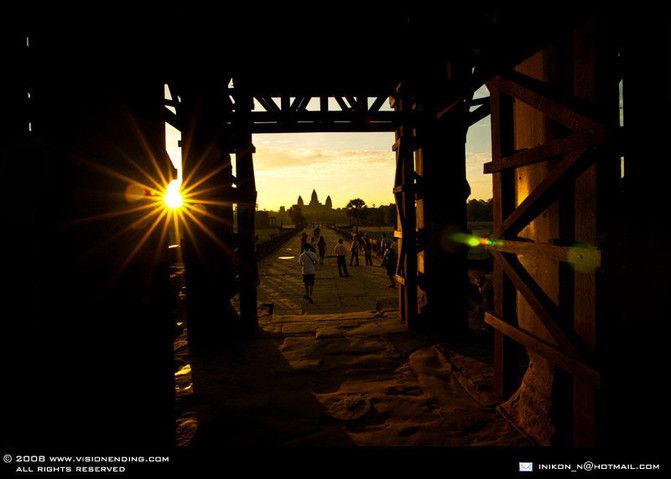
1. How to show the changeable light through exposure? The gorgeous light changes very fast at sunrise and sunset. The bright sun, the dark clouds and the dark earth all add a lot of difficulties to judge the exposure. Exposure is a difficult part of sunrise and sunset. Most people often make the mistake of overexposure. If the sky is too bright, it will lose the atmosphere of sunrise and sunset. If the exposure is not enough, it is easy for the ground scenery to lose too much detail. In this case, the exposure compensation can be reduced on the basis of multi area average metering or central focus average metering, generally about 1-2ev. If you want more accurate metering, you can choose the point metering function. Aim the light measuring point at the area close to 18% gray on the sky to read the light. Remember not to select the area with sun or ground scenery, but the cloud or sky close to 18% neutral gray. Aiming at the neutral gray area, the metering value will be accurate without any compensation. After pressing the AEL button to lock the exposure, the re composition is ready to shoot. If the metering area is brighter or darker than neutral gray, the metering result needs to be compensated accordingly. Tips: what is 18% gray? 18% gray is neutral gray, which is the reference for most cameras to measure light. It's as bright as the back of most people's hands. Sony a900, 16-35mmf2.8za, F14, 0.8s, sunlight white balance, Warwick, Switzerland use branches to block out part of the blank sky, the picture is more full.
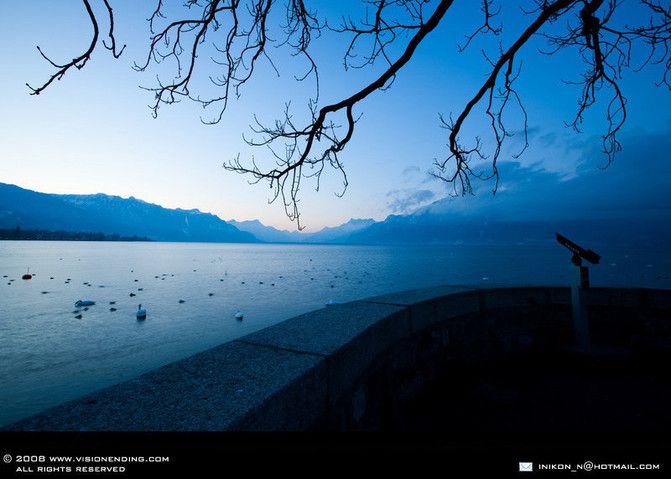
Photo caption: what is the photometry for the area within the white circle in the picture? Exposure compensation? Oh, do as I said, as long as you choose a reasonable metering area, there is no need for exposure compensation. Of course, you can also reduce the exposure to get more saturated colors. The light changes very fast. Remember to re measure the light from time to time. If your camera doesn't have point metering function, it usually has a local metering function. The biggest difference between it and point metering is that the metering range is slightly larger. Find a larger neutral gray area or replace it with a long focus lens, and pull the focus to the longest to measure the light. Is the light measuring area much smaller? Tips: point metering the metering range of point metering is very small, generally about 1-3%. It only measures light at one point in the picture, regardless of the brightness of other areas. As long as the 18% gray area is measured, a very accurate exposure value can be obtained. This way of light measurement is very suitable for complex light environment such as sunrise and sunset.
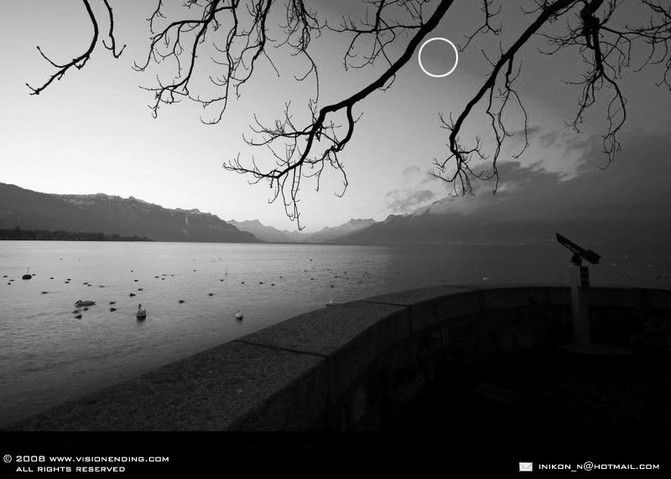
The slower shutter speed of Nikon F100, af80-200mmf2.8d, F16 and 1 / 8s in Shengsi, Zhoushan, Zhejiang, can also increase the flow of clouds. In order to get a larger depth of field, we usually use a smaller aperture value to shoot. For SLR digital camera, my suggestion is to choose the aperture value between f11-16. Because the smaller aperture value will cause the image quality to decline because of the diffraction of light. In such a dark light with a small aperture shooting, the shutter speed is certainly not fast, so a stable and reliable tripod is necessary.
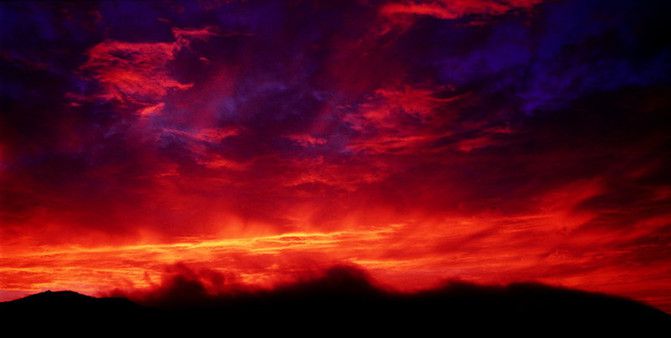
2. How to choose white balance: sunny a900, 70-200mmf2.8g, 1.4 × Distance mirror, F11, 1 / 1000s, iso200, sunlight white balance, Angkor Wat, Cambodia sunlight white balance are conducive to the expression of golden feeling. At the same time, pay attention to control the position of the horizon, since it is to show the sky, leave more space for the sky clouds and the sun. The light at sunrise and sunset is warm and golden. Many people's photos of sunrise and sunset always can't show this golden color and look very pale. The main reason is that automatic white balance is used. Automatic white balance can automatically correct the color deviation in the light, so that the color of everything looks close to the hue seen in the noon sun. However, it will think the light is too yellow in warm light. To reduce the influence of this yellow light, the photo will become gray. This is not what we want. Don't think it's coming from the late PS. When discussing photography skills, I always don't want to talk about PS. some people exaggerate the ability of PS, which really makes many photography lovers wrong the direction of photography learning.
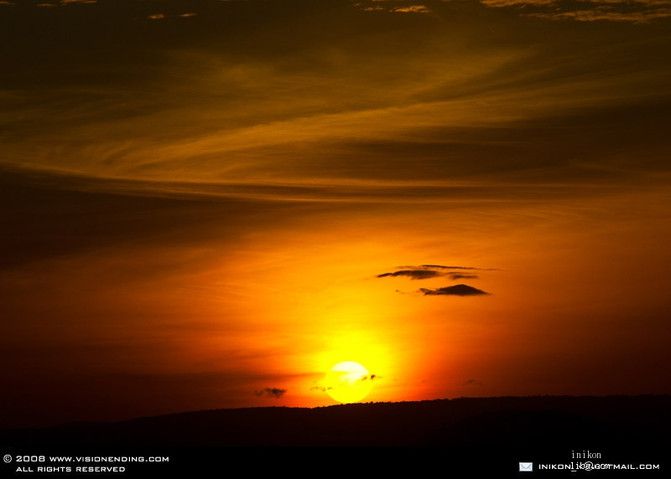
Sony a900, 16-35mmf2.8za, F16, 1 / 13s, iso200, sunlight white balance little Angkor, Cambodia. If you only need one move to fight all over the world, it's very simple. The secret is to set sunlight white balance. Most of the daylight white balance options on the camera are 5500k. Before sunrise and sunset, the sky is mostly blue, but the color temperature is very high. When it is set to sunlight white balance, the color temperature of the scene light is higher than the camera white balance, and the picture will be bluish. Secret collection: the balance of sunlight and white leaves the world.
Tips: white balance and color temperature "white balance" function, in short, no matter what the ambient light, you can define "white" as a function of "white". As long as the correct definition of "white", other colors are like finding the coordinates, the camera can better restore the color. Color temperature is a physical quantity used to define the color of light source in lighting optics. When a blackbody is heated to a temperature and the color of the light emitted by it is the same as that emitted by a light source, the temperature heated by the blackbody is called the color temperature of the light source, or color temperature for short, and its unit is expressed by "K". Color temperature is a physical quantity used to define the color of light source in lighting optics.
Canon 20d, ef-s17-85mmf3.5-5.6sis, F5, 1 / 40s, iso400, solar white balance + m2, Nepal bucktemple, add a little color in the white balance drift option to make the sky produce gorgeous purple. The light color temperature at sunrise and sunset is about 2000-3000k. When the scene light is lower than the white balance value set by the camera, the picture will turn yellow. The larger the difference, the more obvious the color deviation. So whether it's before sunrise or at sunrise, you can use the solar white balance to take all.
Sony a900, 16-35mmf2.8za, F16, 1 / 30s, iso200, shadow white balance, little Angkor, Cambodia. When reducing the exposure, you need to pay attention to the details of water and grass on the lake. If it is too dark, you can't see those beautiful details at the bottom of the picture. If you want to exaggerate the color of blue or yellow at that time, you can create a miracle by adjusting the "little magic" of white balance. Remember that the higher the white balance value of the camera is set, the more yellow the picture is, and vice versa. In addition, please pay attention not to adjust too much, otherwise the color will be very fake. What do we do when we do magic? No trace, right? Secret: increase the white balance value, the screen turns yellow, otherwise it turns blue. It can be purplish red or green by drift.
3. Determine the orientation of the sun. We always take pictures of sunrise or sunset. Towards sunrise, you can get a very gorgeous picture of the sky changes, especially if there are not too thick clouds. I usually go to the sunrise shooting place one day in advance to confirm the environment and sunrise location. The position of sunrise can be roughly judged by compass, at the same time, you should know your general dimensional position. Although the sunrise in the southern and northern hemispheres rises in the East, the angle of South or north is very different, and it is also related to the season. The safest way is to consult the local people to get the exact location and sunrise time. Sunset is much easier. In the afternoon, you can look up and know the general direction. Google Earth is a very useful software, not only can be used to query the location of traffic, but also can be used to observe the sunrise location and specific sunrise time. Take this information with you on your way. Google Earth software is used to simulate and display the direction and time of sunrise on the shooting day. Secret: confirm the location of sunrise in advance.
4. The best time to take a silhouette is Sony a900, 16-35mmf2.8za, F16, 1 / 640s, iso200, shadow white balance. Angkor, Cambodia uses a character to block the sun. The strong sunlight will not easily affect the light measurement of the camera. When shooting against the sun, we can often take the beautiful sky as the background and take the scenery or people on the ground as silhouettes. The trick is to measure the light in the sky and focus on the subject. When measuring light against the sky, you can make the measuring area of the camera face the sky, do not add ground scenery, and lock the measuring result with AEL before focusing. Finally, the composition is taken. Secret: measure the light of the sky and focus on the main body. Tips: AEL when we measure light, sometimes we need to expose the brightness of a certain area, but we don't care about whether other areas are under exposed or over exposed. We can choose the appropriate metering mode to measure the light in these specific areas, and use the AEL button to lock the metering reading. No matter how to change the viewfinder range and shooting angle, the exposure value will not be changed. Most of the operations of the AEL button can be set in the custom menu of the camera: press and hold valid, press once to lock, then press once to unlock, etc.
5. Sunrise in snow mountain
If you think that shooting sunrise and sunset is always directed in the direction of the sun, it's a big mistake. Some subjects, such as snow mountain sunrise, are not the direction of sunrise, but the snow mountain opposite to it. When the first ray of sunlight shines on the top of the snow mountain, the towering snow mountain seems to be inlaid with a golden edge, which is very unique. The sun rises very fast and the light is changing rapidly, so the shooting must be fast. Before shooting, you need to adjust the tripod, camera, lens and exposure to reasonable parameters. When shooting a sunset on a snowy mountain, you must be patient and wait until the last sunshine dissipates. There may be unexpected surprises waiting for you. Canon 20d, ef70-200mmf2.8l, F14, 1 / 25s, iso100, sunlight white balance Nepal pokharana puruna mountain secret release: shooting towards the opposite side of the sun.
6. In the golden light of the world, Sony a900, 16-35mmf2.8za, F16, 1 / 640s, iso200, shadow white balance, Angkor, Cambodia and other photos should not be overexposed, and the exposure compensation of about 1eV can be reduced on the basis of average metering. After the sun rises completely, the direction of the sun is not as beautiful as before. At this point, we can focus on the land bathed in the golden sun. Now that the light is bright enough, you can take the camera off the tripod and walk around to see what interesting pictures are worth shooting. Remember to control the white balance and the angle of the light. This low angle light has a strong modeling function, side light, oblique side light or backlight can increase the three-dimensional sense of the picture. The same can be done at dusk.
CANON EOS 5D[UNK]EF24mmF2.8[UNK]F8[UNK]1/25S[UNK]ISO100[UNK]日光白平衡
The low angle light of karovy Farley in Czechoslovakia makes his shadow very long and full of drama. Secret play: the use of low angle light modeling role. Summary of shooting technology of sunrise and sunset: 1. Exposure should not be over; 2. Sunlight white balance; 3. Use bright sky to shoot silhouette effect; 4. Pay attention to the scenery opposite the sun; 5. Use low angle light to shape
6. Use tripod shutter cable
